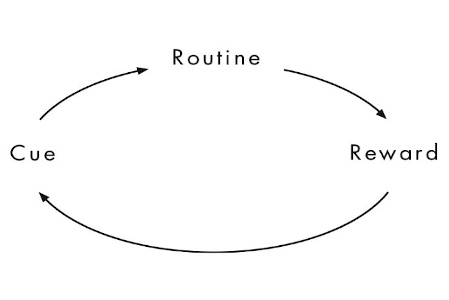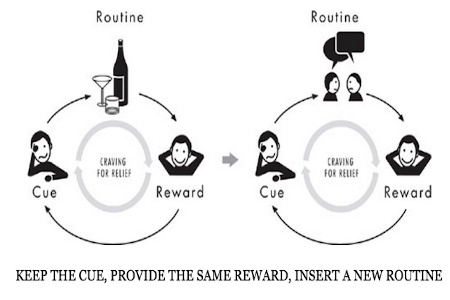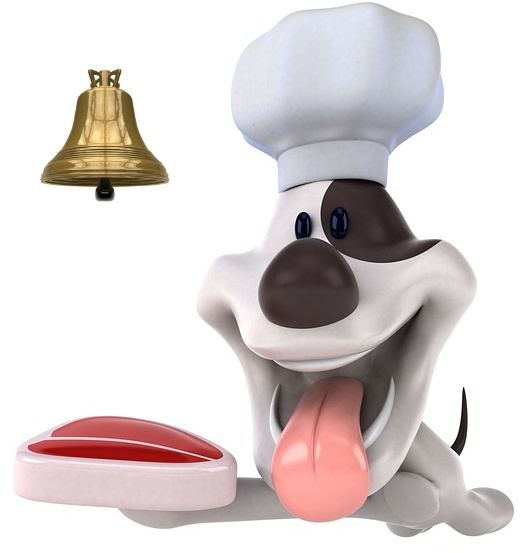Reversal of Kicking off A Habit 3: Habit Loop x Pavlov’s Conditioned Reflex

Habit Loop is made up of cue, habit routine and reward. I tried to search for who first discovered it or created the theory. In Charles Duhigg’s book, it was said to be discovered by MIT researchers. It is a very brilliant discovery and great for people who want to kick off a habit like smoking, drinking, overeating, etc.
But I found the pattern is very similar to Pavlov theory...
First, let’s talk about the habit loop.
What is Habit Loop?

- Habit Loop from The Power of Habits by Charles Duhigg
It is made up of three elements: cues(triggers, stimulus), habit routines and rewards.

- AA Habit Loop from The Power of Habits by Charles Duhigg
It may be easier for people to relate to when using AA(Alcoholics Anonymous) as an example. For AA members, they need to identify their cues and rewards in their drinking habits.
Possible Cues(triggers or stimulus): Crave for a drink as it offers escape, relaxation, companionship, anxieties and a chance for emotional release.
Rewards: Temporarily forget about their anxieties, worries, give them emotional release
For AA, instead of drinking habit routine, NEW HABIT ROUTINE has replaced the bad habit by talking to their sponsor to release their worries and anxious feeling. Cues and rewards are the same, but the routine has been changed. AA program requires ninety meetings in ninety days to have the new habit routine gets hooked.
What is Pavlov Theory?
Ivan Pavlov Theory: Conditioned Reflex(Classical Conditioning)
In the 1890s, a Russian physiologist Ivan Pavlov(1849-1936) discovered “conditioned reflex” accidentally when researching on salivation in dogs. I remember that was what I learnt in high school. But now it is named as Classical Conditioning. I prefer calling it “conditioned reflex”.
Pavlov’s “conditioned flex” theory, a learning process of a dog salivation governed by associations between an UNCONDITIONED stimulus(food) and another CONDITIONED stimulus(bell ring) which occurs naturally.
In other words, the reflex(salivating) can be triggered by CONDITIONED stimulus(bell ring) alone even without UNCONDITIONED stimulus(food) after the habit has been hooked.

The process of conditioned reflex involves three phases:
Phase 1: Pre-conditioned state
At this phase, a stimulus(food) will naturally trigger a reflex(salivating). Food is unconditioned stimulus and salivating is unconditioned response.
Phase 2: Conditioning state
Then, a neutral stimulus(bell ring) is being repeatedly applied along with the unconditioned stimulus(food) to trigger an unconditioned reflex. After some time the habit gets hooked, the neutral stimulus(bell ring) will become a CONDITIONED stimulus. And the reflex(salivating) will be conditioned to respond to CONDITIONED stimulus(bell ring).
Phase 3: Post-conditioning state
Once the unconditioned stimulus(food) and conditioned stimulus(bell ring) are hooked up, the conditioned stimulus(bell ring) ALONE can trigger the reflex(salivating). That’s why it is called conditioned reflex. It means the subject(dog) has learnt to induce the salivating with ONLY conditioned stimulus(bell ring)
The key elements of Conditioned Reflex:
1. Acquisition
Acquisition requires a neutral stimulus(bell ring) to become linked with an unconditioned stimulus(food). This must then be repeatedly reinforced to ensure strong learning takes place.
2. Extinction
Extinction (the opposite of acquisition) occurs when a conditioned response weakens or ceases to exist. For a conditioned response to be maintained, the unconditioned stimulus must be re-introduced occasionally to ‘top up’ the desired conditioned response.
3. Generalisation of stimulus
Once a conditioned response has been created, it can tend to emerge as a response to other stimuli which appear similar. For instance, if a particular bell tone is the conditioned stimulus, similar sounding bell tones can elicit the same response.
- from www.firstdiscoverers.co.uk
Next is the exercise or assignments for putting the theory into practice! Are you ready ?
Posted on 2019-08-04